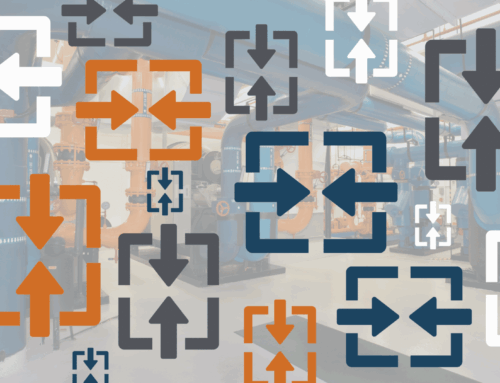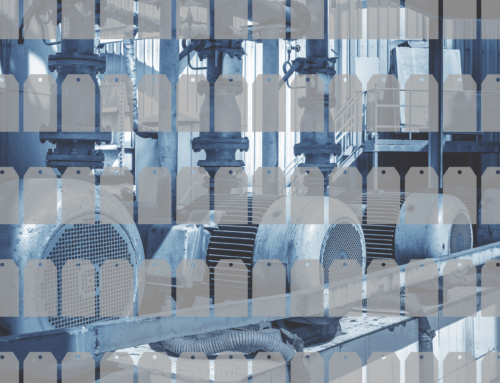Data historian tag names can become your enemy when you’re trying to operate your equipment. It becomes an even greater obstacle and annoyance when you have thousands to hundreds of thousands of tag names to decipher and use.
By designing and implementing data management systems, we have seen a lot of data historian tag names, both good and bad. You would spend some time picking out a child’s name, a boat’s name, a pet’s name, or a building’s name, so why not spend some time picking your tag names? We’ve created some guidelines for tag names to follow so that you can rest assured that you have your historian tag name house in order.
Data Historian Tag Structure
Create a system-wide structure that all levels of the organization follow. Consistency is key. Each piece of equipment, each system, and each site should follow the same naming structure. Different departments might oversee different assets and not have significant crossover now, but that doesn’t mean that is how it always will be. The same naming convention will make current and future collaboration much easier across the entire organization.
Pro tip: Create naming convention standards and document them. Don’t assume the convention is self-explanatory. And documentation always makes it easier for others to follow in different departments or in the future.
Legacy Data Historian Tag Names
Most of you probably have existing tag names. Don’t let legacy or inherited tag names keep you from updating the tag naming convention. In addition, as sensors continue to decrease in price and more sensors are included in new OEM equipment, you will see an increase in the number of tags. Take the time now to create a naming convention that makes sense for big data and IIoT. Your future self and future colleagues will thank you. Remember: consistency, consistency, consistency.
Character Minimums and Maximums
There is not an ideal number of characters for tag names. It depends on how your organization wants to use the tag name and description fields. For us, we see some quick fixes:
You don’t have to spell everything out. For example, bearing can be shortened to brg or brng. Temperature can be shortened to tmp or temp. Software will typically accept long tag names, but the viewing field is limited. Try to eliminate unnecessary letters so you can see more information at a glance without having to scroll or hover over the name.
Don’t go overboard with shortening unless everyone is on the same page and you have a key for others to decipher the meaning. For example, you could shorten bearing temperature to BT, but will BT be confused about the boiler tube in a week, a month, or a year?
Tag names should not be longer than the description. When the name is longer than the description, the description provides no additional value. Consider shortening the tag name and providing the details in the description.
Pro tip: You’ve already created a tag naming convention document to share with the entire organization. Include a key of acceptable abbreviations and acronyms. This will be helpful as a reminder for yourself, for new hires, and for third parties that work with you.
Limit Number Usage
A tag ID is different from a tag name. Software may have no issue with identifying a tag with numbers, but the average human will not recollect what numbers mean in terms of the process. Tag names should be meaningful and easily identifiable for all members of your organization. For example, CS2 has meaning: chilling station 2. 3422, on the other hand, would be hard to decipher quickly and easily.
Conflicting Historian Tag Names Information
This may seem obvious, but we have run across quite a few tag names that don’t match the description. Make sure there isn’t conflicting information in the tag name or description and that the tag name and description match. Having to go back and figure out which one is the right one is frustrating and decreases productivity.
Pro tip: Emphasize the importance of quality tag names and have a specific person whom people can report problematic tag names to. As people use the system, they can help improve the quality and check for conflicting information.
Hierarchy
When monitoring, you care about the asset, not just the individual tag. When creating a tag naming convention, keep the asset in mind. If the asset the tag name belongs to is not easily identifiable, it will make your work harder. Similarly, the site or plant should be easily identifiable. This can be done by adding a prefix at the beginning. For example, all tags at the HanAra Power Plant would begin with HPP_, while the Far West Plant would begin with FWP_.
Software
The tools you use to manage, analyze, and visualize tags should be able to handle tag name changes. Ask the software vendors how they create the tag database and how easily it is to change the tag naming convention. Being required to have two tags in the same database that are exactly the same, except one is the old naming convention and the other is the new naming convention, is not a good solution. Don’t let software vendors tell you differently!
Our customers continue to improve their operations with the help of HanPrism every day. Reach out to us today to learn more about this and how we can help you improve your operational efficiency. For future blog posts, check out our LinkedIn page.






